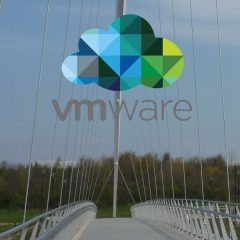Sysprep Validate (fails)
Sysprep Validate KB ID 0001934 Problem Seen whilst running sysprep on a Windows machine. System Preparation Tool 3.14 Sysprep was not able to validate your Windows installation. Review the log file at %windir%\system32\Sysprep\panther\setupact.log for details. After resolving the issue use Sysprep to validate your installation again. Solution: Sysprep Validate Fails Well it’s telling us to review that file, the easiest way to...
Directory Partition Has Not Been Backed Up
Directory Partition Has Not Been Backed Up KB ID 0001933 Problem Seen recently when running dcdiag. A warning event occurred. EventID: 0x80000829 Time Generated: xx/xx/xxxx xx:xx:xx Event String: This directory partition has not been backed up since at least the following number of days. You are seeing this error because dcdiag interrogated the event log and found an Event ID 2089 Log Name: Directory Service Source:...
Best Practice: Demoting a Domain Controller
Demoting a Domain Controller KB ID 0001932 Problem I was having a conversation with some colleagues this week, the conversation was about the placing of an RDS license server, and somebody had recommended putting it on the domain controller, I pointed out that this wasn’t a perfect idea, because in four or five year’s time somebody’s going to demote and take that to my controller off-line and forget all about the fact that...
Windows Server LBFO with Cisco IOS
LBFO with Cisco KB ID 0001931 Problem: LBFO with Cisco In Windows LBFO (Load Balancing Fail Over), commonly referred to as Teaming, is a method of combining multiple physical* NICs into one logical NIC (Team). *Note: It is possible to team virtual NICS in a VM, but redundancy and failover in a hypervisor environment are usually handled by virtual switches. Solution Common Sense Check and Tech Tips Remember, if you are not at the same...
Windows Server Cannot Rename NIC
Rename NIC KB ID 0001930 Problem: Rename NIC I had a strange problem. I needed to rename a NIC on one of my Windows 2025 Servers, but despite my selecting rename, nothing happened. Solution Where there’s a will, there’s usually some PowerShell, so launch an administrative PowerShell window and get a list of your network cards with the following command. Get-NetAdapter Then use the following command to rename the NIC of your choice. ...
Cross Hypervisor Migrations Using Veeam
Cross Hypervisor Migrations KB ID 0001925 Problem At a time where a large slice of the community is moving away from VMware, my employer finds itself with a situation where it needs to migrate TO VMware (from Openstack KVM. We need to retire this platform and the customers we have on it, we are hoping will move to our VMware/NSX based IaaS platform. In recent years we have faced challenges with potential customers who were on...
Veeam Invalid NFS Path
Invalid NFS Path KB ID 0001924 Problem When trying to setup a Veeam repository that is an NFS Share, I got the following error. After about 35 minutes of trying different combinations and back slashes and forward slashes I gave up. Solution : Invalid NFS Path I knew I’d seen this before, and annoyingly I’d not written anything down! Turns out I’m old (and blind), the answer is staring me in the face. THERE SHOULD BE...
VMware Workstation – ‘Linked Clones’ from Templates
Linked Clones KB ID 0000953 Problem VMware Workstation, is a great test tool, if i need to take a look at some new software, or plan how I’m going to do a job, and I don’t have access to the ESX server, or test bench, it’s a great tool to have on my laptop. If you build machines form scratch, every time you need one it can take a while. To address that you can create a template and deploy machines from that. To...
Audit GPO Changes
Audit GPO Changes KB ID 0001920 Problem If you are reading this your either replanning ahead (bravo!) or there’s been an incident that you are concerned about. If that is the case its important to remember that “you cannot audit retrospectively”* *Note: you can find out when GPOs were altered, but not by whom, with some simple PowerShell i.e. Get-GPO -All | Select-Object DisplayName, ModificationTime Group Policies are...
Windows Certificate Services – Setup a CRL
Setup a CRL KB ID 0000957 Problem One of the often-overlooked tasks in a Public Key Infrastructure (PKI) deployment is configuring your Certificate Services Certificate Revocation List (CRL). For smaller deployments with only one server, you don’t need to worry about complex design considerations (though a CRL doesn’t have to be hosted on a Certificate Services server). In my test environment, I have only one PKI server,...











